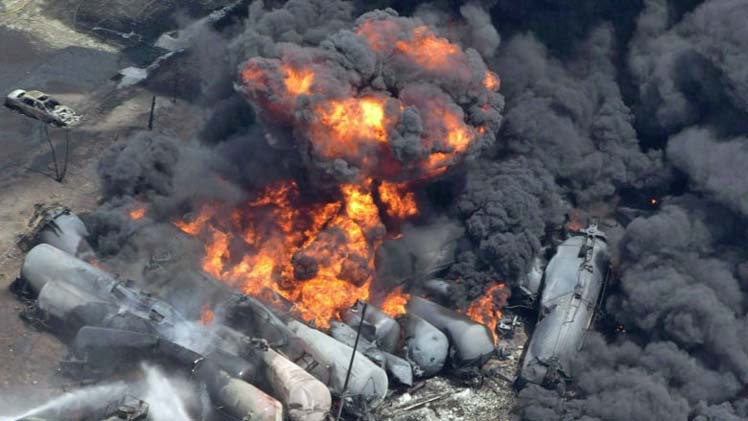
5 Years After Lake Megantic
Canada - There's still a lack of incentive for the rail industry to make changes five years after one of the deadliest rail disasters in Canadian history, says Ian Naish, a rail safety consultant and former Transportation Safety Board of Canada (TSB) investigator.
Naish told Information Morning Fredericton the rail industry still has more power than the federal regulator, and that's a problem when it comes to creating fundamental change after the Lake Megantic disaster.
In terms of the safety management systems of railways, Naish said it takes resources and political will in order for change in the industry to occur.
"It has to be department priority to get done," he said.
"I wouldn't be surprised if, in four years time, there would still be some outstanding recommendations."
Following the disasters in Lake Megantic, the Transportation Safety Board made the following five recommendations:
- The Class 111 tank cars used to transport flammable liquids have to meet certain standards to reduce the risk of product loss in an accident. Newer cars for the transport of flammable liquids should be phased in before 2025;
- Railway companies should conduct route planning and analysis and perform periodic risk assessments to ensure risk-control measures work;
- There should be emergency response assistance plans for the transportation of large volumes of liquid hydrocarbons;
- Railways should be required to install physical defences to prevent runaway equipment;
- The Department of Transportation should audit the safety management systems of railways to make sure the processes are effective and corrective actions taken to improve safety.
So far, only the recommendations involving periodic risk assessment and emergency response assistance plans have led to "fully satisfactory" action, according to the board.
With the other three, "not very much has been done," Naish said.
"There was something that had failed basically in the system in the case of Lake Megantic, the approach, and I don't know that that issue is actually being addressed."
Safety Matters
Naish said railways want to make money and minimize their expenses and the number of regulations they have to follow.
"They want to minimize the number of regulations to expedite traffic, and that's a business philosophy in the Western world."
He said regulators want companies to prosper, but they also want to keep people safe.
"I don't think those priorities have ever been sort of merged to the extent where you can say things are moving forward in a positive direction. It's more like the status quo is the status quo."
In a statement released Thursday on the TSB website, chair Kathleen Fox said that once all of the recommendations receive the board's highest rating of "fully satisfactory," the safety of Canada's rail network should be "greatly improved."
"That won't bring back those who were lost that day, but it will be a big step toward making sure that an accident like this never happens again."
Sarah Morin.
provisions in Section 29 of the Canadian
Copyright Modernization Act.


